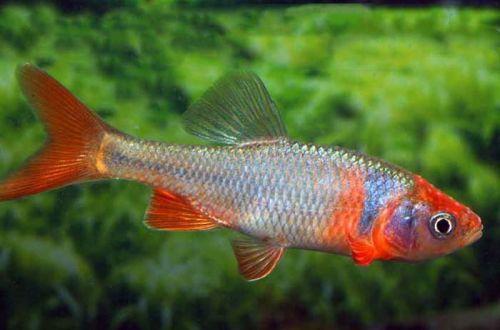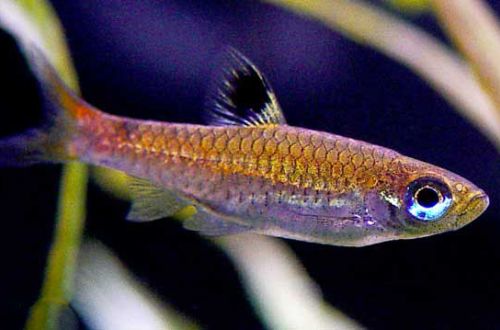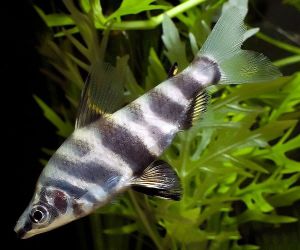
Red notropis
Red Notropis, scientific name Cyprinella lutrensis (formerly Notropis lutrensis), belongs to the family Cyprinidae (Cyprinidae). Fish native to North America, found everywhere in fast mountain rivers and swampy reservoirs. Despite their “American” origin, the main commercial supplies of these fish to Europe come from nurseries in Southeast Asia.

In its homeland in the USA, the Red Notropis is better known as a bait in sport fishing than an inhabitant of home aquariums.
Description
Adult individuals reach a length of 7–9 cm. There are several geographical forms that differ from each other in color. The most famous variety is considered to be a form with a red abdomen and fins, while the body itself is painted blue.
During the mating season, males have white tubercles on their heads, which disappear at the end of spawning. This is a characteristic feature of many cyprinids.
Behavior and Compatibility
Flock look. It is necessary to maintain the size of the group at least 8-10 individuals. With a smaller number, in pairs or singly, they become shy. Compatible with other cold water peaceful fish.
Brief information:
- The volume of the aquarium – from 250 liters.
- Temperature – 15-25°C
- Value pH — 7.0–7.5
- Water hardness – 10–20 dGH
- Substrate type – any
- Lighting – moderate, bright
- Brackish water – no
- Water movement – light or moderate
- The size of the fish is up to 9 cm.
- Food – any food, preferably live and/or frozen
- Temperament – peaceful
- Content – flock in the amount of 8-10 individuals
Maintenance and care, arrangement of the aquarium
Undemanding to the conditions of detention. Red notropis is able to live both in open ponds during the warm season in the southern latitudes, and in home unheated aquariums. A comfortable environment is considered to be slightly alkaline water of medium hardness with a temperature in the range of 15-25°C.
The optimal size of the aquarium for a flock of 8-10 individuals starts from 250 liters. The design is arbitrary, provided that there are open areas for swimming and places for shelters, for example, from snags and thickets of plants that can grow in cool water.
Aquarium maintenance is standard. It is necessary to replace part of the water with fresh weekly, combining this procedure with cleaning the soil from organic waste.
Food
Omnivorous species. Can be accustomed to dry food, however, live or frozen foods (brine shrimp, bloodworms, daphnia, etc.) are considered the most optimal choice for a daily diet.





